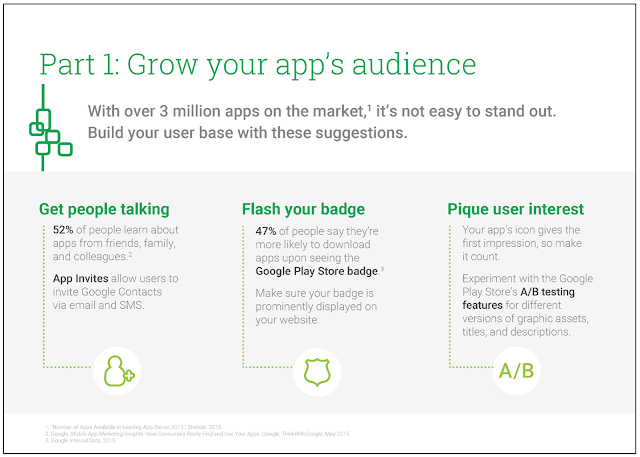Mobile Bootcamp Part I: Get your app into shape for the holiday season
During the 37 hours per month typically spent in apps, people look to their mobile devices for information and entertainment.
This comes as no surprise, however, to our DoubleClick customers. You already see most of your audience is mobile: more than half the queries on our platform today come from mobile devices, across mobile web and apps. This holiday season will bring increased traffic and even greater potential to grow revenue, peaking in January. Mobile app installs are expected to increase by 150% on Christmas Day compared to an average day in December.
To help you take advantage of the surge in user activity on mobile, and particularly in apps, we’ve gathered our most actionable research and best practices. Make the most of the holiday app frenzy with this four-day mobile bootcamp on reaching, engaging, and monetizing your app audiences.
Grow your app’s audience
Of the five hours per day that US consumers spend on smartphones, 54% of digital media time is spent in apps. How can you ensure your app is one of those? Cheney Tsai, our Mobile Solutions Consultant at Google, recommends five steps to help you connect with your audience everywhere.
- Get people talking about your app: 52% of users learn about an app from friends, family, or colleagues, proving yet again word-of-mouth is a reliable promotion method. Cheney suggests using App Invites, a beta feature for iOS and Android, which allows users to invite Google contacts to your app via email and SMS. As explained by Cheney, "First impressions matter! App Invites allow you to reach new users with a warm welcome, which could be game-changing for the long term value of your user. You can even reward the sender/receiver with a custom deal just for them."
- Make it easy for your existing users to find you, everywhere: By expanding your house ad campaigns to cross-promote on existing properties, you can target desktop users in addition to those on Android and iOS. Use App Indexing to redirect your SEO based traffic to your app; users who have the app are redirected into it while those without the app are prompted to install. Also, make sure your Google Play Store badge is prominently displayed on your website. Users are 47% more likely to trust and download apps upon seeing the Google Play badge!
- Optimize your creatives to pique users’ interests in stores: Your app’s presentation in app stores directly impacts downloads. Since the icon is the first impression, make it polished and descriptive with a featured image demonstrative of your app’s uniqueness. Experiment with the Play Store’s A/B testing features for different versions of graphic assets, titles, and descriptions. Cheney recommends playing up keywords with which users are most likely to find your app!
- Identify high performing channels and optimize with better analytics: Pinpoint your most successful app install campaigns and creatives to create an effective promotion strategy. For both iOS and Android, you can use Google Analytics to understand your user drop off points. Dive even deeper with app install tracking and custom campaigns to identify your top app referrers!
- Listen to your users and address their concerns: User comments may offer constructive feedback, so it’s integral to have a plan in place to respond and make changes. In Google Play Developer Console, you can reply to reviews to help users overcome a problem or communicate relevant information. According to developers like James Jerlecki at Text Plus, “The Reply to Reviews feature has essentially given me that direct line [to users] that I didn’t have before.”Just remember your reply is publicly visible, so ensure you have the right person in your organization replying.
With over 3.1 million apps across the Google Play and Apple stores, your app needs to be present whenever users are looking to discover new apps and stand out from the crowd when they find your app. Check out this blog tomorrow for recommendations from Jason Rosenblum, Mobile Solutions Consultant at Google, for engaging your users.

 |
Posted by Danielle Landress Associate Product Marketing Manager, Publisher Marketing |



